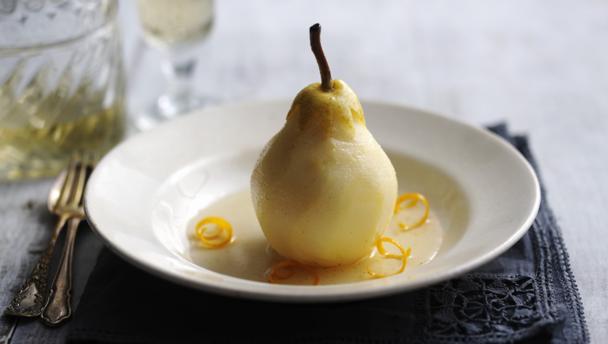

By Michel Roux
Pears can be thick- or thin-skinned with juicy, sweet flesh that can be buttery or slightly granular in texture, depending on the variety. The main British-grown varieties are Doyenne du Comice, Conference and Concorde. Comice has a meltingly soft texture, while Conference is slightly more granular. Concorde, a cross of the two pears, is buttery-textured.
 Cinnamon porridge with grated pear
Cinnamon porridge with grated pear
 Roquefort salad with pears, chicory and walnut oil
Roquefort salad with pears, chicory and walnut oil
 Christmas pudding trifle
Christmas pudding trifle
 Mulled wine baked fruit
Mulled wine baked fruit
 Light and fruity mince pies
Light and fruity mince pies
 Crispy filo mince pies with pear and apple mincemeat
Crispy filo mince pies with pear and apple mincemeat
 Tear and share Christmas Chelsea buns
Tear and share Christmas Chelsea buns
 Spiced clementine smoothie
Spiced clementine smoothie
 Whole strawberry and vanilla preserve
Whole strawberry and vanilla preserve
 Pear and ginger coins
Pear and ginger coins
Pears are normally sold hard as they bruise easily. They will ripen in a few days at room temperature, but turn woolly if over-ripe.
Pears are served cooked or raw, but in either case toss in a little neat lemon juice or acidulated water to prevent discolouration. Raw pears need to be prepared at the last moment. Use them in savoury salads, where they can be mixed with bitter leaves, sharp-flavoured cheeses, nuts or air-dried ham. To cook, peel and simmer pears gently, either in a flavoured syrup or with lemon, to enhance their delicate flavour. They are often poached with wine and spices. Cooked puréed pears are good in ice creams, fools and soufflés.
Article by Sybil Kapoor
Type the ingredients you want to use, then click Go. For better results you can use quotation marks around phrases (e.g. "chicken breast"). Alternatively you can search by chef, programme, cuisine, diet, or dish (e.g. Lasagne).